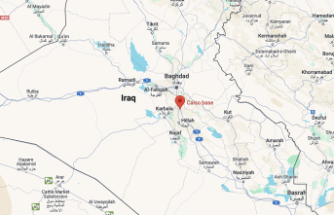neither one, Nor two, three bodies. Scientists at the Children's Hospital of Cincinnati (USA) have used stem cells to develop the first system in miniature of three organoids connected and functional human liver, pancreas and bile ducts.
In place of cultivate mini human organs - independently in the laboratory separately, the team, led by Takanori Takebe, managed to grow a connected set of three bodies. The findings are published today in the journal "Nature"
The organoids developed from stem cells, are small formations in 3D human tissue that perform the functions of multiple cell types that are found in bodies of full-size. Experts in organoids had already developed intestines which have villi, which absorb nutrients and organoids stomach that produce digestive acids.
By themselves, the organoids humans already provide a sophisticated tool for research. But this advancement makes it possible to study how human tissues together. This great step forward could begin to reduce the need for studies of drugs based on animals, to accelerate sharply the concept of medical accuracy and some day lead to transplantable tissues grown in labs.
This breakthrough allows us to study how human tissues in whole"The connectivity is the most important part of this -points Takebe-. What we have done is to design a method to produce tissue at the stage of formation prior to the organs so that they can develop naturally. We are maximizing our ability to fabricate multiple organs in a manner very similar to what makes the body," says Takebe.
To achieve this system, Takebe worked for many hours with colleagues from Cincinnati Children's, including the first author Hiroyuki Koike. They started with skin cells to the human, turning them back into stem cells primitive, then guiding and pushing these stem cells to form two "spheroids" of cells at a very early stage, so-called foregut and the midgut.
These balls of cells are formed in the lasa initial phases of embryonic development. In humans, in the first month of gestation, and in mice in only 8.5 days. With time, these areas merge and are transformed into bodies that will, eventually, be converted in the digestive tract.
What we have done is to design a method to produce tissue at the stage of formation prior to the organs so that they can develop the natural wayonce they were mature enough, you ubucaron the spheroids next to each other in a special laboratory dish. The cells were suspended in a gel that is commonly used to support the growth of organoids, was then placed on a thin membrane that covered a lot carefully mixed growing medium. " since that time, the cells knew what to do , " says Takebe.
then, the cells in each spheroid began to become to be found in the boundary between the two. They became more specialized cells that could be seen changing color due to the chemical tags that the computer lab had adhered to the cells.
Soon, the areas changing and merging sprouted into branches that led to new groups of cells that belong to specific organs. During a period of 70 days, these cells continued to multiply in cell types more refined and different. Finally, the mini-organoids began to process the bile acids as if they were digesting and filtering food.
To Aaron Zorn, Director of the Center of Medicine of Stem Cells and Organoids (CuSTOM) of the said centre, this move will be useful in multiple ways. "The real breakthrough here was to be able to create a system of organs integrated; from a research perspective, this is an unprecedented opportunity to study normal human development".
Now, to develop the tissues of organs large enough to be useful in human transplantation, Takebe says that more work is needed.
From a research perspective, this is an unprecedented opportunity to study human development standard"But for the purposes of research and diagnosis, this discovery could have more immediate implications"
For example, the medicine of precision, is beginning to use genomic data and other information to determine exactly what treatments work best for patients with serious illnesses , at what dose and with the fewest possible side effects.
So, say, a 'gut' live of multiple organs would provide scientists with a powerful tool to study exactly how genetic variations and other factors affect the development of organs during pregnancy, and to develop drugs better targeted to treat conditions after the birth of the babies.
Date Of Update: 25 September 2019, 21:03











